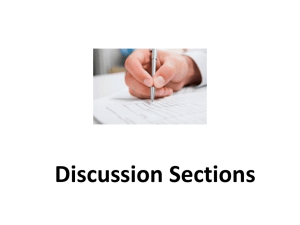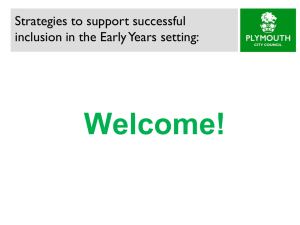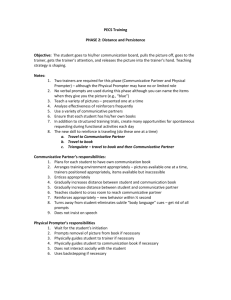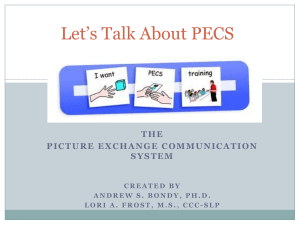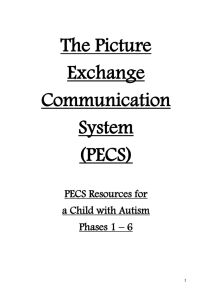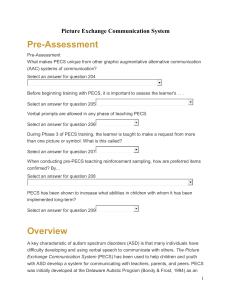PECS Training Phase 6: Responsive and Spontaneous
advertisement
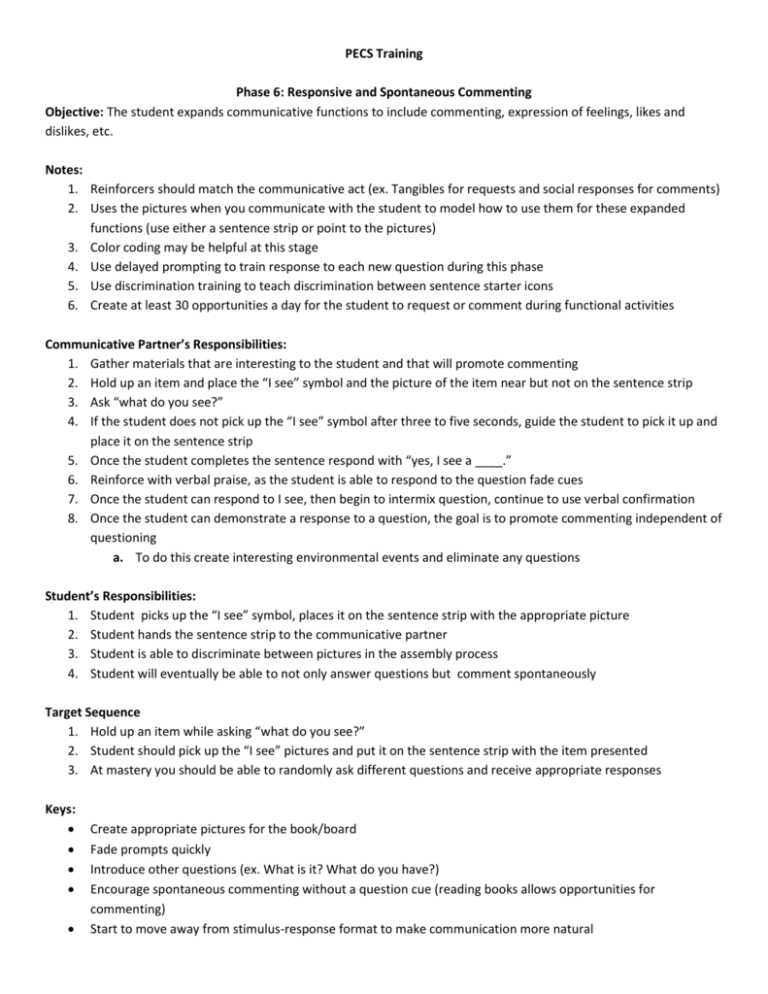
PECS Training Phase 6: Responsive and Spontaneous Commenting Objective: The student expands communicative functions to include commenting, expression of feelings, likes and dislikes, etc. Notes: 1. Reinforcers should match the communicative act (ex. Tangibles for requests and social responses for comments) 2. Uses the pictures when you communicate with the student to model how to use them for these expanded functions (use either a sentence strip or point to the pictures) 3. Color coding may be helpful at this stage 4. Use delayed prompting to train response to each new question during this phase 5. Use discrimination training to teach discrimination between sentence starter icons 6. Create at least 30 opportunities a day for the student to request or comment during functional activities Communicative Partner’s Responsibilities: 1. Gather materials that are interesting to the student and that will promote commenting 2. Hold up an item and place the “I see” symbol and the picture of the item near but not on the sentence strip 3. Ask “what do you see?” 4. If the student does not pick up the “I see” symbol after three to five seconds, guide the student to pick it up and place it on the sentence strip 5. Once the student completes the sentence respond with “yes, I see a ____.” 6. Reinforce with verbal praise, as the student is able to respond to the question fade cues 7. Once the student can respond to I see, then begin to intermix question, continue to use verbal confirmation 8. Once the student can demonstrate a response to a question, the goal is to promote commenting independent of questioning a. To do this create interesting environmental events and eliminate any questions Student’s Responsibilities: 1. Student picks up the “I see” symbol, places it on the sentence strip with the appropriate picture 2. Student hands the sentence strip to the communicative partner 3. Student is able to discriminate between pictures in the assembly process 4. Student will eventually be able to not only answer questions but comment spontaneously Target Sequence 1. Hold up an item while asking “what do you see?” 2. Student should pick up the “I see” pictures and put it on the sentence strip with the item presented 3. At mastery you should be able to randomly ask different questions and receive appropriate responses Keys: Create appropriate pictures for the book/board Fade prompts quickly Introduce other questions (ex. What is it? What do you have?) Encourage spontaneous commenting without a question cue (reading books allows opportunities for commenting) Start to move away from stimulus-response format to make communication more natural o The item you are asking the learner to label should not be used as a reinforcer Next Steps: Since phase 6 is the last step of PECS, the student should be fairly proficient in seeking their communication book, discriminating among pictures, constructing sentence strips, finding a communication partner and completing the exchange. Here are some ideas of what you can continue to do with the student: Continue adding new pictures to the communication book Develop multiple copies of the communication book for across setting use Continue to provide communicative opportunities Introduce other with who the learner may interact to PECS Provide opportunities without questions to promote spontaneous commenting Introduce attributes and modifiers to provide the learner with specificity in requests (ex. I want the blue blocks or I’d like a large piece of cake)
